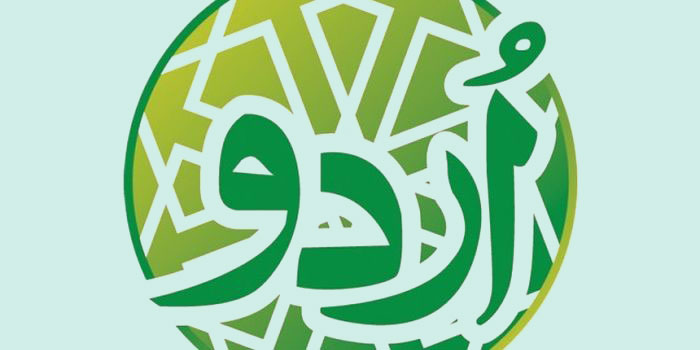With broadband subscriptions reaching an all-time high and 3G/4G usage rising at a rapid pace, Pakistan is going through a period of meteoric internet growth. Mobile internet users have crossed 26 million mark in Pakistan and loads of Pakistani websites are popping up every day to meet the local demand.
Demand for Local Online Content in Urdu is High
The internet has tons of stuff, be it for knowledge or entertainment needs, and with internet usage levels amongst Pakistanis rising, the demand for localized content is at an all-time high. What our internet is missing is the impact of content in our national language, Urdu.
Reading and viewing content in English is hard for most of the people worldwide where it is not the native language, especially more in Pakistan. Over 40 percent of Pakistani adults are illiterate and most of the remaining 60 percent have little understanding of the English language, the de facto language of the internet.
Getting online content in local languages can reduce the gap between the haves and have-nots considerably. Plus it can also encourage the use of internet by more and more people in Pakistan.
The availability of newspapers and TV content in the national and regional languages is one of the reasons why they have been so successful and maintained their supremacy in this day and age. It is natural to prefer content in one’s mother tongue, no matter where anybody is in the world.
Issues faced by Content Creators Currently
The problem faced by content creators is the lack of support for the Urdu language. While there has been breakthroughs enabling coders to write code using Right-to-left languages, it is still far from becoming mainstream. Despite the hurdles, developers still manage to put out enough products and services in Urdu, but with increasing demand this might not hold true in the future.
Media content creators, while small in number upload lots of content, but access to it is limited thanks to English-only websites. Google does offer Urdu versions of its websites which, while mediocre in translation, still face greater problems when it comes to its search engine and its limited Urdu support. the same goes for Facebook.
The same goes for Facebook. The rest of the internet, however, is still in English.
As far as written content goes, there is only one major website on the internet that does Urdu justice. It comes up amongst the top 5 websites in Pakistan and the top 500 in the world. Alexa rates Urdupoint.com at 5th position in Pakistan under its ‘Top Sites in Pakistan’ list. There are a few more websites in Urdu language but they aren’t as easy to read.
The cause of the problem is the lack of Urdu fonts for the web. While there are a few fonts that are being used by a couple of websites, they are by no means a match for a high-quality font like Jameel Noori Nastaleeq or Lahori Alvi.
The aforementioned fonts are often used by magazines, newspapers and documents. They are easy on the eye and make reading very pleasant.
A common person would ask, why not use the same fonts for the web? The answer to that is, these fonts are huge in size. Each web page would be 10MB to 40MB in size if these high-quality fonts were to be used. Increase in size reduces a web page’s performance, increasing loading times. Google search algorithms also tend to reduce a website’s search rank if it has slow loading speeds; a reason which puts Urdu websites at a major disadvantage.
A workaround is to have these fonts installed on a user’s PC or mobile device. Which is impossible unless companies like Microsoft, Apple, Google and others incorporate these fonts in their hardware and software natively that is.
The internet relies on five types of fonts. These are listed below:
- TrueType Font (TTF) – Old format with large file sizes. Compatible with Internet Explorer version 9.0 and above, Chrome starting at 4.0, Firefox at 3.5, Safari since 3.1 and Opera beginning with 10.0
- OpenType Font (OTF) – Old format with large file sizes. Has the same browser compatibility as the TrueType Font
- Web Open Font Format (WOFF) – Newer format with small file sizes. Supported by Internet Explorer version 9.0 and above, Chrome starting at 5.0, Firefox at 3.6, Safari since 5.1 and Opera beginning with 11.1
- Web Open Font Format 2.0 (WOFF2) – Latest format with the smallest file sizes. Supported only by Chrome since version 36.0, Firefox starting at 35.0 and Opera with 26.0
- Embedded OpenType Font (EOT) – Old format with small file sizes. Exclusively available for Internet Explorer version 6.0 and above.
The Web Open Font Format (WOFF) has become the web standard for quite some time as these fonts are compressed and require less bandwidth. They also contain extra metadata. However, these fonts aren’t always available and sometimes TTF and OTF fonts have to be converted to these formats, but the conversion doesn’t always work. High quality Urdu fonts are only available in OTF and TTF formats and cannot be converted to other formats due to technical reasons.
Google and Adobe have the biggest font repositories in the WOFF and WOFF2 formats. There are, however, very few Right-to-Left fonts and those are only for the Arabic language.
Concluding Thoughts
The solution to the problem is that Pakistani designers and developers need to come up with some good and web-optimized fonts for the Urdu language. It is a vacant space in the market and the developers can take advantage of this opportunity. Website creators would probably not mind getting paid licenses if they are offered some high-quality fonts. The number of Urdu websites has been on a constant rise and the only thing keeping them from going forward are the less than adequate fonts which make reading very hard.
An increase in Urdu content viewership and Urdu fonts will definitely open more doors in the language’s adoption rate. Google, Microsoft, Facebook and other web giants will put more effort in molding their services for languages like Urdu and content creation could get much more simple.
Edit: We would like to clarify that a few Urdu fonts are indeed available with relatively small file sizes, close to about 200KB in size. But, these fonts are of a far lower quality compared to the high-quality fonts mentioned above (e.g Jameel Noori Nastaleeq). High-quality fonts are used in offline content like books, magazines and newspapers but are not available for web content. Most of the English web content can use fonts with sizes ranging 5KB to 75KB using the WOFF2 format. Such small file sizes are not available for Urdu fonts, hence increasing page loading duration and putting Urdu websites at a disadvantage in search results.


























Why do I get the impression that the writer is totally ignorant about the topic and might be living under the rock. There are many Urdu fonts available with sizes under 200KB now, and those include “Nastaleeq” style as well.
The only problem Urdu publishers are facing that there are not many people searching in “Urdu” for the content and still typing Roman in their search bars.
Indeed. I’ve even used Google’s Noto Nastaliq font for a tiny Android game. The TTF font file is under 290 KB in size and the WOFF2 is 117KB. It’s true that there are a few issues with it, but the issues are being actively tracked on Github; search the googlei18n/noto-fonts repository’s issues for
is:issue is:open nastaliq
Please read my reply above. Games and apps can make use of high quality fonts. It’s the websites that lack these fonts.
I’d advise you to compare a high quality font used in books and Noto nastaleeq. You’ll notice the difference.
The issues you mention are caused by lack of developers and designers offering their fonts in the latest formats.
Development in this field has almost come to a stall.
If you want people to read in Urdu, start publishing in Urdu. Have you tried to use Noto Nastaliq on a website and found it difficult to read? Again, it’s available as WOFF/WOFF2 (which is the latest format available), and all web content publishers need to do is add a stylesheet + set their font-family to it. This isn’t about what urdupoint or others use; it’s an option you have right now, as a web content publisher.
> Development in this field has almost come to a stall.
What makes you say that?
I am not disagreeing on “If you want people to read in Urdu, start publishing in Urdu”. But publishing and viewership are directly related. You would obviously want to use the most demanded fonts and wouldn’t prefer to make do with a make-do font.
I have seen Noto Nastaleeq, and it doesnt even come close to Jameel Noori Nastaleeq. Yes, its a new font (with WOFF and WOFF2 support) but its not the typical font used and seen everywhere that Urdu language is used. Books, Magazines, TV channels and newspapers, all of them use high quality fonts which are popular among readers. Noto may be new but its not the font which has been preferred by Pakistani readers for decades. We want fonts similar to the ones used in offline content if we are to increase Urdu content viewership and rise in Google search rankings.
I was talking about font development. It’s almost stopped. You don’t get much of a choice when it comes to fonts and those which are good (easy to read), were developed years ago.
Oh, come on! We already have enough fonts. It’s just you guys who’ll consider anything different than Mirza Jameel’s Noori Nastaleeq to be a blasphemy. Get over it! We have bigger problems to deal with about Urdu than those tiny improvements in how good a font looks.
You definitely have no idea of the impact of a good font on a website’s viewership especially for a language like Urdu.
It doesn’t have to be Jameel Noori Nastaleeq, it gets mentioned more because more people are familiar with it. There are several other high quality fonts like the few mentioned in the article and Faizi Alvi, Alvi Nastaleeq which need to be available for the web.
Yes there are a few fonts available with file sizes of less than 200KB. But they are of low quality.
The article is clearly focused towards the “lack of high quality fonts”. When you visit any Urdu website, even urdupoint, you will notice a clear difference in the fonts used in books or newspapers and those websites. These we site fonts aren’t clear, look low quality and have many similar issues.
The fonts that you mention are stored on Website servers. Google or any big company has does not offer Urdu fonts by default for Urdu content. You would find crappy fonts when you search for content in Urdu and no one wants to go through the trouble of reading those.
Express.pk is in Unicode.
Express pk is the TV channel’s website. I mentioned the newspaper website which uses pictures for all of the articles.
It is only because of e-paper format and nothing to do with fonts. If not, why Tribune e-paper is still available?
Sir, that’s not what I was discussing. I am sure Express would love to use a decent font and upload written articles instead of uploading pictures. These pictures are hurting their SEO rating.
@ashadman:disqus Go to http://cricnama.com and tell me if it looks “low quality” to you?
Yes, its a good website but the main font is indeed a low quality font for readers. It is difficult to make out most words because of the smudgy texture and waning font strengths. I doubt it was even developed to be used in such situations.
Compare it with Jameel Noori Nastaleeq and Alvi Nastaleeq and you’ll know the difference. Go to a website which uses the 10MB high quality fonts (eg http://archereye.com) and compare them.
And please look at the bigger picture. If there were any fonts developed in the latest formats, we might see google’s Urdu translation and all Urdu services on the Web to be much more user friendly
URDU KO SAB SAY ZIDAH NUQSAN NASTALEEQ FONT NAY PHUNCHAYA HAI.
woh kaisay?
Because Nastalique is technically unsuitable for computers and Internet. 56 languages use Arabic script and not one of them uses Nastalique because of the difficulties. Naskh helped them get far ahead of us. Moreover, a large number of type faces are available in Naskh while there is just one for Nastalique. Ayub Khan took us ahead by adopting Naskh for all official and educational purposes. Unfortunately, Ziaul Haq pushed us back to Nastalique on the advice of an octogenarian.
This is an off topic comment but Urdu language is missing Google’s Android. I wonder why they don’t implement urdu when they already have farsi and arabic which are similar to urdu.
Possibly because they find Android’s Urdu userbase is small. Heck, even if an xda dev comes up with an Urdu mod, Google will bring it to Android. Maybe we, the users, should put up requests to get Android in Urdu
Urdu is available in cm12.1
Only problem is that it is Urdu & English mixture.
Thanks for telling. I never got to try those version of CM
cm by default starts with urdu language. I used it once for full 15 minutes and believe me it was terrible experience.
Maybe someone can offer them assistance in that translation
Because we are stuck with Nastalique. Arabic and Farsi use Naskh, which causes no difficulty. We are somehow unwilling to do it. 56 languages use Arabic script and not one is using Nastalique. Is that not good enough reason for us to follow them?
Article lacks the history and progress of digital Nastaleeq fonts currently available for web and desktop. Although, they are not consider up to the mark but give some hope for “beautiful” future. Some of these includes Nafees Nastaleeq, UrdType by Microsoft and Noto Nastaleeq by Google.
The articles is focused on the lack of typical (high quality) fonts for the web. You are right about these fonts you mentioned. They are good but not up to the mark.
More viewership will definitely bring more development in this category
The problem is we are stuck with Nastaliique
The only issue is lack of support by search engines.
Can we do something about it?
Technically, search engines do support Urdu same as English. The only problem is in appearance and readability.
Yes the appearance is the problem, as mentioned by @Muhammad Asad:disqus, and so is the lack of support of links in Urdu language. People are working on bringing more languages to the more technical side of web development.
Search engine do support it but problem is how you present it to the searchbot. Not enough information is available to do such job. I am trying currently trying to do my best to make my site as compatible as possible with googlebot. please check http://www.punjnud.com
Some sort of competition might solve the problem, but before that a proper guidance should be provided on how to create a font. Especially when it’s RTL (kerning, leading, tracking). Once Urdu had it’s foundation and have some standard than creating new font for other language like Pashto would just require inclusion of some new alphabets.
You are right. A guide would definitely increase competition. And I think there might be one about RTL fonts on the web.
If someone works on it, it’ll be a great help to our language.
I started a library of Unicode fonts from more than 1 years and countless websites are using it now a days even i am always short in bandwidth. The library contain Jameel and Nafees and working smoothly, have a loo at http://pashtofonts.com
I am aware of your WP plugin. Its great and one of the few things that helps urdu bloggers.
Again the problem is the same. You are offering high quallty fonts with huge file sizes only. Every time a page loads, the user downloads the font from your server. That is the reasons website loading is slow and you are low on bandwidth.
If these high quality fonts were in smaller web formats,say 100KB to 400KB in size, it would have been great.
I see that you have Jameel.woff with 7MB file size, but it lacks bolds, italics and similar stuff. May I ask how were you able to convert it?
These fonts are available in all formats you mentioned above. The mystery behind 7MB Jameel is that it consists more than 33K “JORH”, there are lots of services which can convert TTF to WOFF.
Offcourse it will load the page a bit slow because the resources is stored on remote server. Even google font can cause delay in the speed when you are using it.
Yes, noticed that most fonts are available in different formats except Jameel which is only available in WOFF. There isn’t any WOFF2 I think.
Jameel doesn’t support bolds and italics possibly due to conversion. And none of the online tools work on converting fonts over 10MB.
The thing is it takes about a minute for such large fonts to load. Had they been in KBs, it would help a lot of developers. Of course, creating fonts isn’t easy and we can only hope someone comes up with a n alternative to Jameel and Alvi with much smaller sizes and files which have been converted to WOFF2.
We have to somehow convince people to search in urdu instead of roman urdu. That will surely help